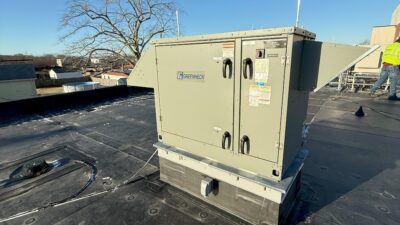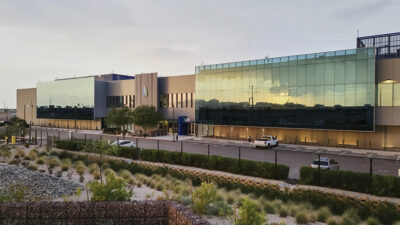
Learning objectives:
- Identify necessary codes to design university buildings that are safe, efficient and compliant.
- Understand how to communicate with the necessary sources to ensure compliance from early phases of a project.
Codes and standards insights:
- One of the biggest challenges in existing buildings is adapting legacy infrastructure to meet modern codes.
- Meeting and exceeding codes starts with early coordination across disciplines and continuous code tracking throughout design.
Respondents
- Dennis Coblentz, Project Manager, RMF Engineering, Charleston, SC
- Cindy Cogil, PE, FASHRAE, Vice President, SmithGroup, Chicago, IL
- Abdullah Khaliqi, PE, MCPPO, CPQ, Principal, Academic, Fitzemeyer & Tocci Associates, Inc., Woburn, MA
Please explain some of the codes, standards and guidelines you commonly use during the project’s design process. Which codes/standards should engineers be most aware of?
Abdullah Khaliqi: Our designs are guided by a range of codes and standards to ensure safety, efficiency, and compliance. For MEP systems, we frequently ASHRAE Standard 90.1: Energy Standard for Buildings Except Low-Rise Residential Buildings, ASHRAE Standard 62.1: Ventilation for Acceptable Indoor Air Quality, NFPA 70: National Electrical Code (NEC), NFPA 72: National Fire Alarm and Signaling Code and NFPA 13: Standard for the Installation of Sprinkler Systems. We also reference the International Building Code (IBC), International Mechanical Code (IMC) and International Plumbing Code (IPC). For sustainable design, LEED v4.1, WELL Building Standard and local energy codes play an increasing role. Engineers should stay current on code updates, as changes. Energy efficiency and electrification can significantly impact system selection and sizing.
What are some best practices to ensure that such buildings meet and exceed codes and standards?
Abdullah Khaliqi: Meeting and exceeding codes starts with early coordination across disciplines and continuous code tracking throughout design. We conduct peer reviews, use building information modeling for clash detection and apply energy modeling to optimize systems beyond baseline requirements. Engaging commissioning agents early ensures systems are designed for performance, not just compliance. We also work closely with authorities having jurisdiction to clarify interpretations and avoid surprises during inspection.
How are codes, standards or guidelines for energy efficiency impacting the design of such projects?
Abdullah Khaliqi: Energy efficiency codes and standards are significantly influencing system choices and overall building design. Requirements from ASHRAE 90.1, the International Energy Conservation Code and local stretch codes are driving the adoption of high-efficiency HVAC systems, advanced lighting controls and improved building envelopes. We now integrate energy modeling early in the design process to demonstrate compliance and guide decisions. Standards like LEED v4.1 and net zero energy goals are pushing campuses toward electrification, heat recovery, and renewable energies. These guidelines encourage a more holistic, performance-based approach, requiring engineers to balance upfront costs with long-term operational savings and sustainability.
What new or updated code or standard do you feel will change the way such projects are designed, bid out or built?
Abdullah Khaliqi: ASHRAE 90.1 2022 is one major update reshaping university projects. It introduces stricter energy efficiency baselines, a new requirement for on-site renewable energy and enhanced thermal envelope performance. These changes push engineers to adopt performance-based modeling earlier and specify more efficient HVAC and lighting systems. Codes are also evolving to support building performance standards, requiring ongoing operational efficiency, not just design compliance. Additionally, NFPA 4: Standard for Integrated Fire Protection and Life Safety System Testing now mandates integrated life safety testing, requiring early coordination between MEP, fire protection and life safety systems. Together, these updates are changing how buildings are designed, bid and commissioned, with an increased focus on long-term outcomes.
What are some of the biggest challenges when considering code compliance and designing or working with existing buildings?
Abdullah Khaliqi: One of the biggest challenges in existing buildings is adapting legacy infrastructure to meet modern codes without triggering costly full system upgrades. Space constraints, outdated equipment and undocumented conditions often make compliance with standards like ASHRAE 90.1, NFPA and the IBC difficult. For example, achieving required ventilation rates or electrical clearances may require creative reconfiguration. Codes may also conflict with historic preservation guidelines, especially on older campuses. We mitigate these challenges through thorough field assessments, phased upgrades and close coordination with code officials to explore alternative compliance paths, such as performance-based modeling or equivalency documentation, while still ensuring safety and efficiency.
When designing school laboratories, what code or standard must engineers understand most?
Abdullah Khaliqi: When designing school laboratories, engineers must have a strong understanding of NFPA 45: Standard on Fire Protection for Laboratories Using Chemicals, which governs ventilation, fire suppression and storage of hazardous materials. In addition, ASHRAE Standard 62.1: Ventilation for Acceptable Indoor Air Quality is critical to meet minimum ventilation rates, especially when incorporating fume hoods and exhaust systems. For electrical design, the NEC ensures proper grounding, circuit protection and hazardous location classification. Local building codes and the IBC also guide egress, occupancy and structural integration. Understanding these standards helps engineers design safe, compliant and flexible lab environments that support both current curricula and future technology needs.



